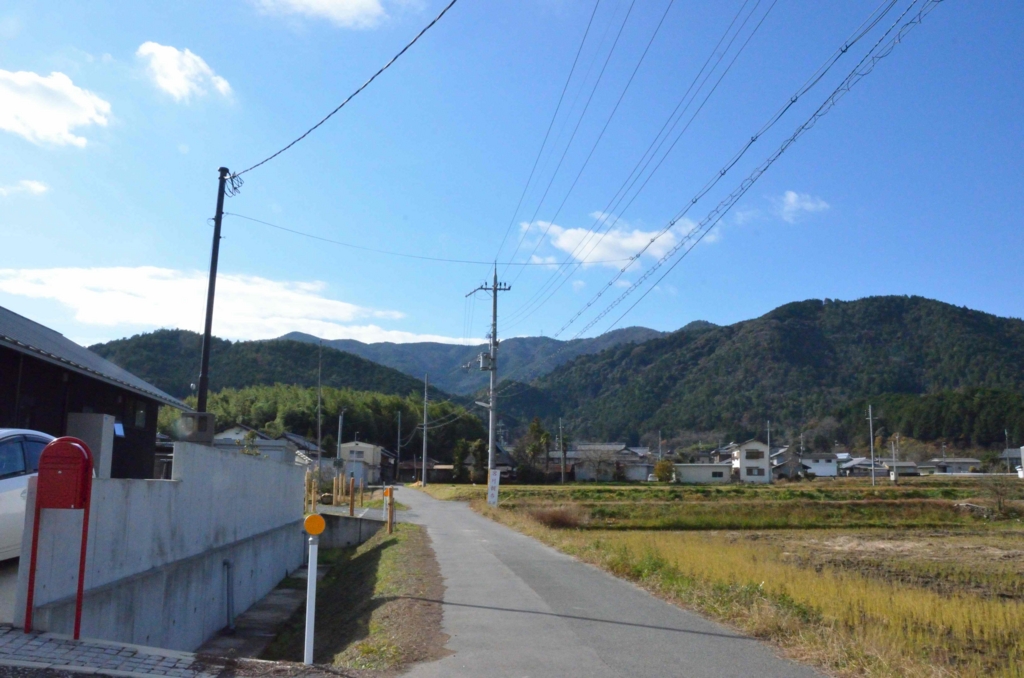On December the 17th, I climbed Mt. Hangokuyama(半国山)as the last mountain hiking this year.

Kameoka basin was not coverd with fog(丹波霧) this time. This is Jizo (a statue of Khitigarbha-bodhisattva) at the entrance of the trail.

Trametes pubescens(ヤキフタケ).

Hairy Bracket Trametes hirsuta(アラゲカワラタケ). This place was full of turkey tail-like fungi.

This is Otowa-no-taki waterfall(音羽ノ滝).

At the upper side of the mountain, the place was covered with snow a little. You do not need crampons or spats at this level of snow.

This is the top Mt. Hangokuyama.

The origin of the term ‘Hangoku’ is, you can see a half of three ancient Japanese countries, Harima, Tanba and Settsu from the top. I can only see this view of Tanba from the place. The other views were only accessible for mountains, otherwise filled with trees.

At the top, you can also found a statue of acala naatha(不動明王).

I went down the mountain. This is Hygrophorus lucorum(キヌメリガサ).


This is Kinrinji temple(金輪寺), founded by a Tendaishu Buddhist Seigan(西願) in 783. The statue of Bhaiṣajya-guru(薬師如来)was said to be possessed originally by Yasuyori Tanba(丹波康頼), the first person who wrote a book of medicine in Japan. It was also related to the battle among Mitsuhide Akechi(明智光秀)and Hatano brothers(波多野兄弟)in Sengoku period.

The trail was covered with moss.



This is Miyagawa Jinja shrine(宮川神社), founded between 701-708 and worships Ikakoyahimenomikoto(伊賀古夜姫命), a domestic goddess of Tanba. It also worships Homuratawakenomikoto/Emperor Ojin(誉田別命/応神天皇).

As there was no fog in the morning, a small number of clouds were appearing.

This is a grasshopper Patanga japonica(ツチイナゴ), tolerating the coldness of winter for passing the season.
For plants identified; Japanese Cedar Cryptomeria japonica(スギ), Hinoki Cypress Chamaecyparis obtusa(ヒノキ), Japanese Red Pine Pinus densiflora(アカマツ), Needle Juniper Juniperus rigida(ネズミサシ), Ring-Cup Oak Quercus glauca(アラカシ), Sawtooth Oak Quercus acutissima(クヌギ), Chinese Cork Oak Quercus variabilis(アベマキ), Japanese Chestnut Castanea crenata(クリ), Quercus serrata(コナラ), Camellia Camellia japonica(ヤブツバキ), Eurya japonica(ヒサカキ), Japanese Maple Acer palmatum(イロハモミジ), Japanese Andromeda Pieris japonica(アセビ), Dodan-Tsutsuji Enkianthus perulatus(ドウダンツツジ), Nandina Nandina domestica(ナンテン). For other mushrooms; Turkey Tail Trametes versicolor(カワラタケ), Trametes orientalis(クジラタケ), Antrodiella gypsea(シックイタケ). For Lichenes, Xanthoria manchurica(アカサビゴケ), For birds, Jungle Crow Corvus macrorhynchos(ハシブトガラス), Brown-Eared Bulbul Hypsipetes amaurotis(ヒヨドリ), Varied Tit Parus varius(ヤマガラ),.